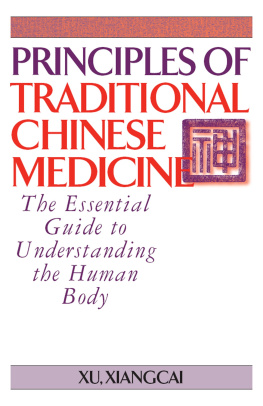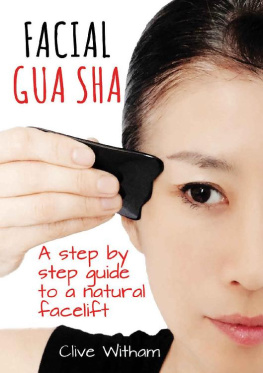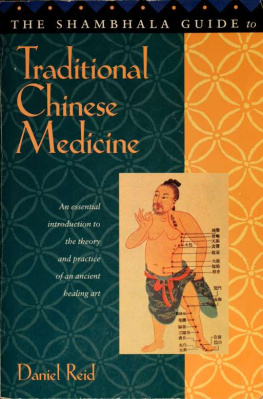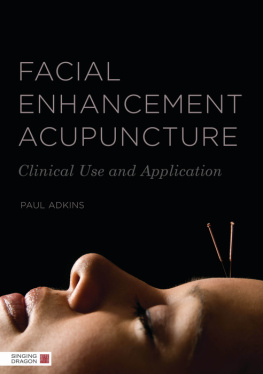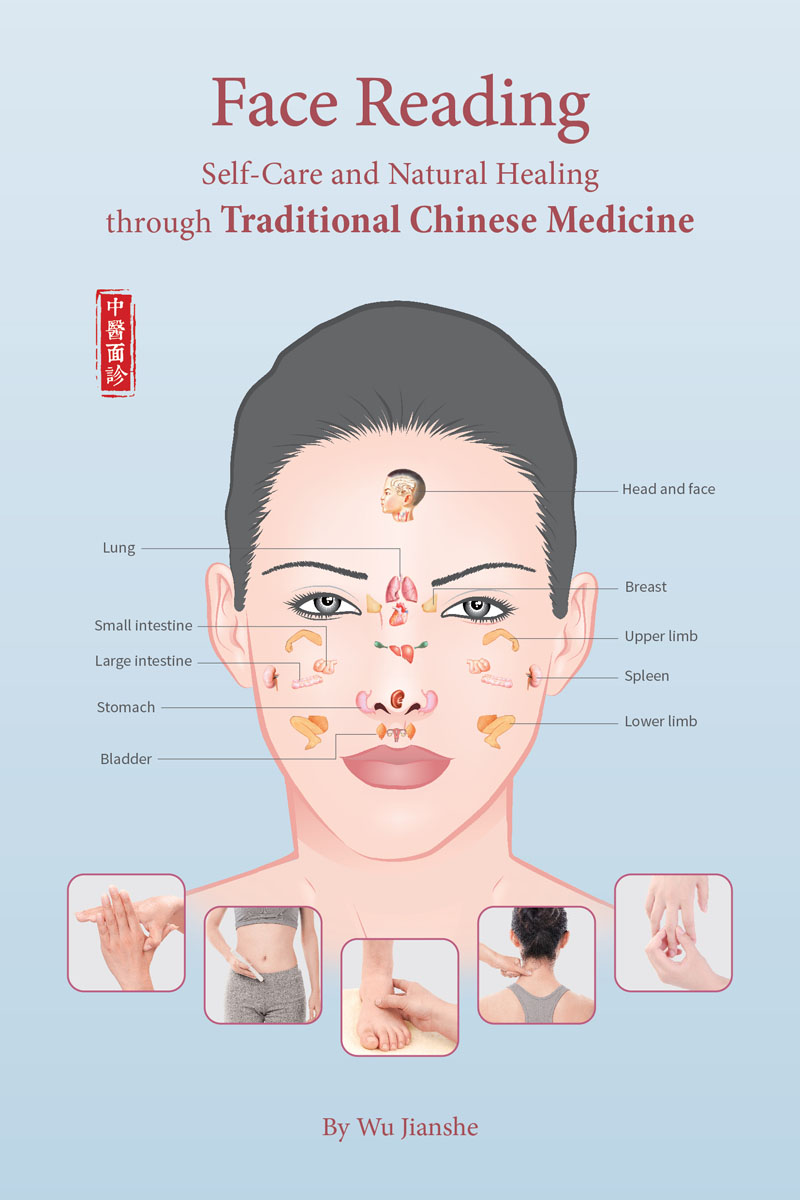
Copyright 2022 by Shanghai Press and Publishing Development Co., Ltd.
Chinese edition 2019 Phoenix Science Press, Ltd.
All rights reserved. Unauthorized reproduction, in any manner, is prohibited.
This book is edited and designed by the Editorial Committee of Cultural China series.
Text by Wu Jianshe
Translation by Wu Yanting
Design by Wang Wei
Copy Editor: Shelly Bryant
Editor: Cao Yue
Editorial Director: Zhang Yicong
ISBN: 978-1-93836-859-2
Address any comments about Face Reading: Self-Care and Natural Healing through Traditional Chinese Medicine to:
SCPG
401 Broadway, Ste.1000
New York, NY 10013
USA
or
Shanghai Press and Publishing Development Co., Ltd.
390 Fuzhou Road, Shanghai, China (200001)
Email:
Printed in China by Shanghai Donnelley Printing Co., Ltd.
1 3 5 7 9 10 8 6 4 2
The material in this book is provided for informational purposes only and is not intended as medical advice. The information contained in this book should not be used to diagnose or treat any illness, disorder, disease or health problem. Always consult your physician or health care provider before beginning any treatment of any illness, disorder or injury. Use of this book, advice, and information contained in this book is at the sole choice and risk of the reader.
Contents








Introduction
According to traditional Chinese medicine (TCM), You know the ailment when you see a persons face, which is divine. In fact, most diseases leave traces that can be detected on the surface of the human body where the twelve principal meridians and the Governor and Conception vessels that connect the internal organs run. That is why it is often said that the symptoms are manifested in the four limbs and five sensory organs, while the diseases are deep in the five viscera organs (zang) and six bowels (fu).
With a long history in China, face reading in TCM is based on thousands of years of valuable experience accumulated from generations of Chinese medical practitioners. The five sensory organs in the face are not only some of the important human organs, but they are also where the meridian pathways run, , and essential qi, thereby gathering information to make judgments on the causes of a disease, establish the pathogenesis, predict the tendency of the disease and sequela, and determine the prognosis. Such information plays a crucial role in the treatment of an ailment.
Guided by the theories of traditional Chinese medicine, face reading not only helps diagnose diseases but has also become increasingly popular for prognosis and maintaining good health. The methods it utilizes are unique and produce effective results. Both economical and safe, face reading is easy to learn and use, making it an ideal means of daily healthcare.
With the aim of disseminating the knowledge of TCM, this book first introduces the fundamentals of face reading in a systematic, scientific manner, then offers a detailed explanation of the methods used to detect many common ailments. Given the capacity of each diseases natural self-healing power, also provided here are physiotherapeutic treatment and internal adjustment measures, such as dietary remedies, physical exercises, and emotional adjustments. Through rich content and a combination of graphics and texts that are easy to understand, this book is a practical, popular primer that even people having no knowledge of traditional Chinese medicine can understand and use for self-diagnosis and self-treatment.

Meridian. In the TCM theoretical system, a meridian is considered a system that communicates between the exterior and interior of the human body and connects with the five zang and six fu organs inside the body. These meridians, which run across the body vertically, linking the interior with the exterior and the top with the bottom part of the body, and the internal organs, extremities, and joints, are responsible for carrying and distributing qi and blood to nourish the muscles and bones. There are roughly twelve principal meridians, which include the Taiyin Lung Meridian of the Hand, the Jueyin Pericardium Meridian of the Hand, the Shaoyin Heart Meridian of the Hand, the Yangming Large Intestine Meridian of the Hand, the Shaoyang Sanjiao Meridian of the Hand, the Taiyang Small Intestine Meridian of the Hand, the Yangming Stomach Meridian of the Foot, the Shaoyang Gallbladder Meridian of the Foot, the Taiyang Bladder Meridian of the Foot, the Taiyin Spleen Meridian of the Foot, the Jueyin Liver Meridian of the Foot, and the Shaoyin Kidney Meridian of the Foot, along with the Governor Vessels and the Conception Vessel.
Zang and fu organs. The general term for the internal organs of the human body. It is mainly divided into five zang organs and six fu organs. The five zang organs are the heart, the liver, the spleen, the lung, and the kidney. The six fu organs are the gallbladder, the stomach, the large intestine, the small intestine, the bladder, and the triple burners.
Qi. The most fundamental and micro-substance that constitutes a human being and sustains all human activity. Qi also denotes the physiological functions of the human body. In TCM, it expresses different meanings when used in combination with other word(s).
Collaterals. In TCM there are the main trunks and branches that transport qi and blood in the human body. These passages are classified into meridians and collaterals, of which the main trunks running vertically are called meridians and the channels branching out from the main trunks are called collaterals.
Chapter One
Understanding Face Reading
Whether a person is healthy or not can be ascertained by observing the face and sensory organs. In TCM, the human face is considered the external representations of the viscera, qi, and blood. It is also where the meridians gather, and therefore the prosperity and decline of the zang and
Next page



